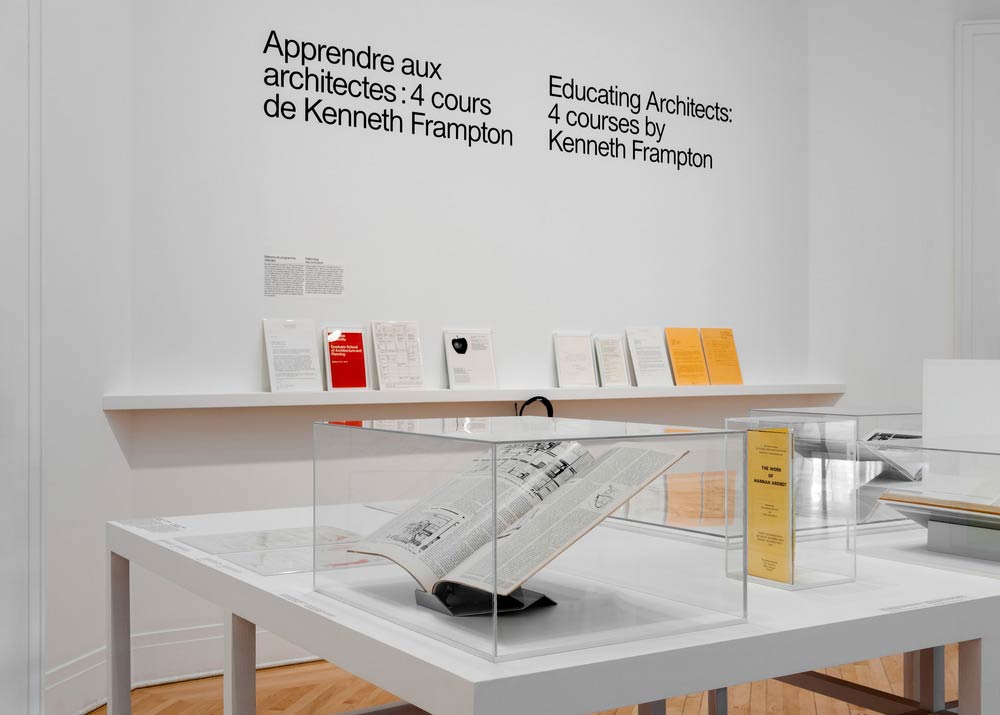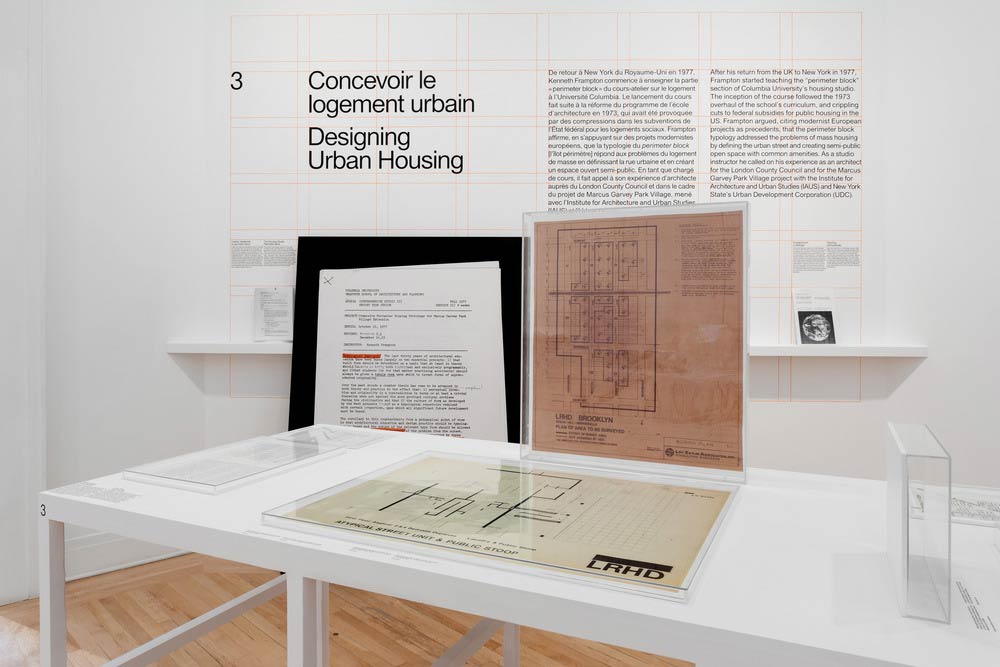
The Canadian Centre for Architecture (CCA) presents the exhibition Educating Architects: Four Courses by Kenneth Frampton in the Octagonal Gallery from 31 May to 24 September 2017. The exhibition is curated by Kim Förster, Associate Director, Research, CCA.

The archive of architectural historian and critic Kenneth Frampton recently arrived at the Canadian Centre for Architecture. As a first step in providing access to this body of work, this exhibition asks how an archive of history, theory, and criticism can inform our understanding of architectural practice today. Structured around the syllabi from four core courses in history, theory, and design, the exhibition illustrates Frampton’s multi-generational impact on the landscape of architecture education. Encompassing drawings, models, photographs, proposals, papers, lectures, slide shows, essays, monographs, letters, and autobiographical documents, the exhibition highlights how his pedagogical methods and concerns were instrumental in shaping the discipline and profession of architecture internationally.

Frampton’s extensive archive at the CCA is comprised of (un)published essays, book manuscripts, illustrates, photographic prints, and sketches. It also includes annotated drawings from the influential 1965 publication of Pierre Chareau’s and Bernard Bijvoet’s Maison de Verre.
With the arrival of this archive, the CCA continues to enrich a collection that supports historiographic research. The CCA also holds the archives of the Institute for Architecture and Urban Studies (IAUS), in which Frampton was heavily involved, as well as part of the archive of Alvaro Siza, about whom Frampton has frequently written.
Jean Louis Cohen, Sheldon H. Solow Chair for the History of Architecture at the Institute of Fine Arts, New York University commented on the relevance of Frampton’s archive:
All these domains in Frampton’s dense activity of more than five decades have yielded multiple types of documents, all present in the collection: written works by him, correspondence with colleagues and architects, photographic prints, slides, audio tapes, ephemera of all sorts – leaflets, brochures and posters. At the CCA, it complements happily the archives of Cedric Price, James Stirling, and Peter Eisenman, providing resources for the study of both Europe and the United States between 1960 and the present.

The exhibition, using a biographical and historiographic approach, tells the story of Frampton’s teaching at various academic institutions and his development as an educator who, in his call for deceleration, has always re-valued architectural works. Since the academy was the dominant setting for Frampton’s career and intellectual life, the exhibition begins with his move to the United States where he assumed a teaching position at Princeton University in 1965.
In the context of education reform in US architecture schools in the 1970s, Kenneth Frampton was integral in transforming the curriculum of Columbia University’s Graduate School of Architecture & Planning. In particular, he designed and taught what became three-core-courses: the theory seminar “Comparative Critical Analysis,” the history lectures “Thresholds of Modern Architecture,” and the housing studio unit on the “Perimeter Block.” In the 1990s, he started teaching “Studies in Tectonic Culture,” which also became a long-standing history and theory course.

Kenneth Frampton is Ware Professor of Architecture at Columbia University’s Graduate School of Architecture, Planning and Preservation in New York, where he has taught since 1972. He was trained as an architect at the Architectural Association School of Architecture in London and has worked as an architect and as an architectural historian and critic. In addition to Columbia, Frampton has taught at a number of leading institutions including the Royal College of Art in London, the ETH in Zurich, the Berlage Institute in Amsterdam, the EPFL in Lausanne, and the Accademia di Architettura in Mendrisio. Frampton is the author of Modern Architecture and the Critical Present (1980), Studies in Tectonic Culture (1995), American Masterworks (1995), Le Corbusier (2001), Labour, Work & Architecture (2005), and, most recently, L’Altro Movimento Moderno (2015) and A Genealogy of Modern Architecture: Comparative Critical Analysis of Built Form (2015). He is currently at work on an expanded fifth edition of Modern Architecture: A Critical History.
comments